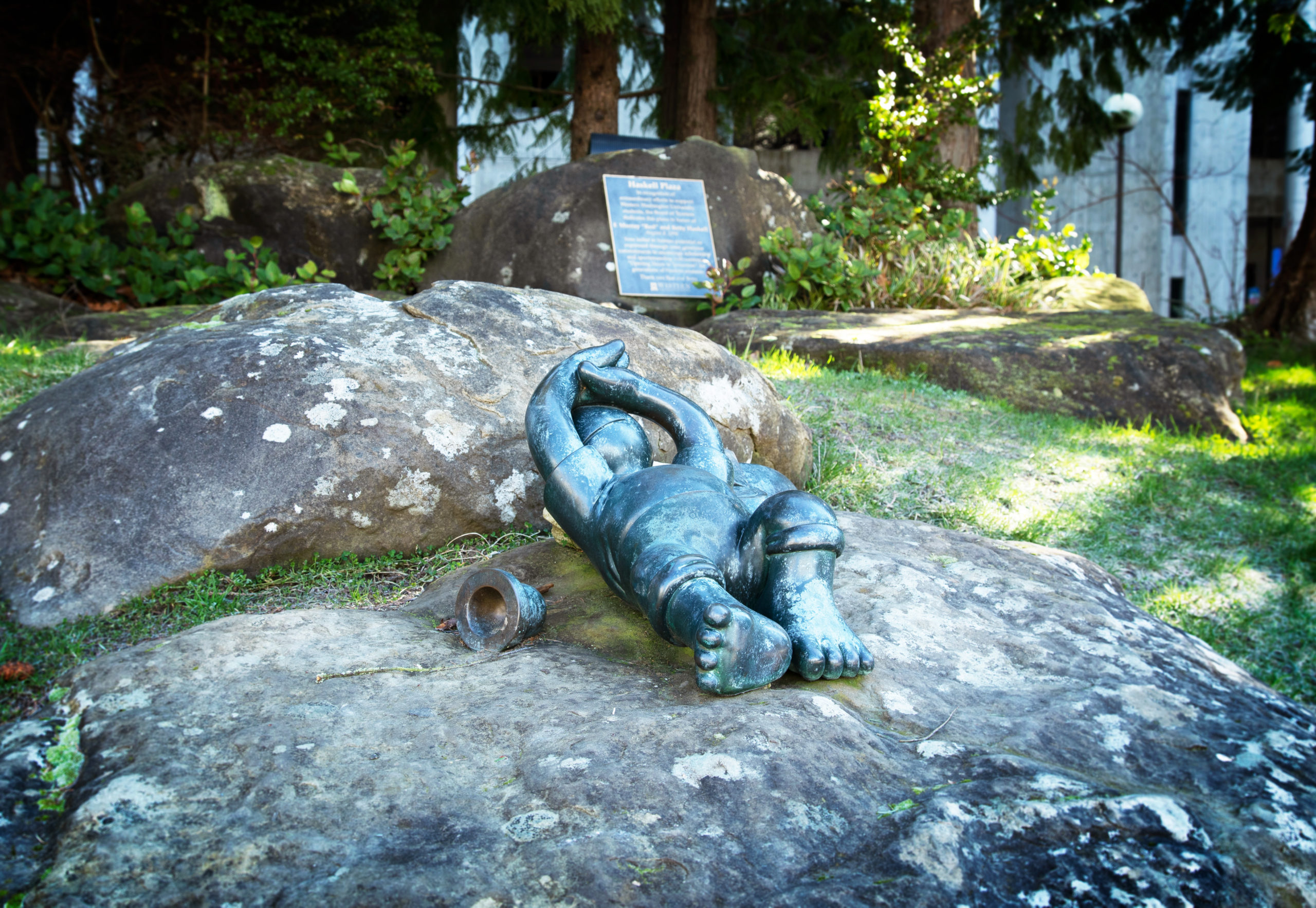By: Cooper Castelle
Like any business, universities need to turn a profit. This means customers, which, in the world of higher education, requires increased student enrollment. Why did you choose Western? Was it the curriculum? The campus? The culture?
Sometimes overlooked among the many assets that make this university such a unique place to attend are the various sculptures found across campus. To some, these structures are merely an aesthetic enhancement to an already visually stunning location. To others, such as WWU Art Gallery Director, Hafþór Yngvason, their meaning is significantly more profound.
Although Western’s sculpture collection is unique, most members of the Western community are unaware of the extent to which these pieces distinguish themselves from their counterparts at competing universities. All educational institutions understand the value of physical appearance with regards to attracting the attention of prospective students, but not all go to the same lengths to actualize this understanding.
While describing his personal experience as an undergraduate student at a university on the east coast, Yngvason articulated the value and respect that a university’s art demonstrates to its students.
“The building was falling apart,” said Yngvason, referring to his former college. “The screens were torn up and there was this big road running straight through campus… I didn’t feel like an appreciated student.”
If COVID-19 has illuminated anything to a lot of students, it’s the value of in-person learning. A successful university strives to create an academically enriching environment that extends well beyond learning material to incorporate the culture, sense of place and meaning that only a physical presence can provide. For its part, Western’s past and present leadership has gone to extraordinary lengths to meet these demands.
Yngvason recalled conversations he had about Western’s sculptures two decades ago while employed as the Director of Public Art at The Cambrige Arts Council in Cambridge, Massachusetts.
“We were all talking about it across the country: What’s happening at Western? Who are they? It was just the most amazing thing,” said Yngvason.
After leaving that position, he then spent 10 years as the Director of the Reykjavik Art Museum in Iceland before returning to the United States to seek employment. “I was looking at university museums because they’re interesting institutions,” he said.
While researching potential employment opportunities, Yngvason found himself unexpectedly coming across a position at Western.
“I know this collection!” he remembered saying. “The prospect of working with this collection, with artists of this quality” was more than enough to warrant an application to be a part of Western and its artistic community.

Western has a particularly special collection of sculptures. From large pieces such as Bruce Nauman’s Stadium Piece to smaller works of art such as Tom Otterness’ Feats of Strengths, there are numerous examples reinforcing Yngvason’s enthusiasm.
But, just how unique are Western’s multitude of artistic structures?
“This collection has twice been selected as one of the 10 best collections of university colleges in the country… It’s one of the five best [in the nation],” said Yngvason. “There are a lot of universities with sculptures but not of this stature.”
Western has a nationally-renowned sculpture collection, besting that of practically any other university you can think of. While impressive, there’s a lot more to the story. Part of what makes this collection so intriguing is the ever-evolving nature of these sculptures.
When asked about how the relationships between students and art have developed over time, Yngvason expressed noticing a lack of interest among young people to engage with art in-person. Art, like everything else, is so readily accessible online that the generally perceived value of interacting with a physical piece of work appears to be decreasing for many individuals of the younger generations. It’s not just that new trends in art are emerging as a reflection of our constantly advancing society; the ways in which we interact with art are evolving as well.
“One of the benefits that we have here on campus is that people are interacting within this culture,” said Yngvason. “They can climb on some of [the sculptures] and walk into them.”

The Seattle Art Museum currently hosts an exhibit called Van Gogh Exhibition: The Immersive Experience, a technologically-enhanced experience that essentially allows viewers to witness some of Vincent van Gogh’s most famous artwork in 360 degree virtual reality. Art lovers are divided on the relatively new concept of so-called ‘immersive art.’ On one hand, it may facilitate increased captivation for younger audiences but on the other, it further promotes the highly contentious notion that the benefits of physical interaction can be adequately simulated through technology.
Does the internet or social media truly keep us all connected or is it simply an excuse to remain physically distant? Perhaps an argument can be made for either side, but there is no denying that a simulation can never be the real thing.
“I don’t think it necessarily gives you more understanding or appreciation of Van Gogh…art will continue to be physical,” said Yngvason. “People will continue to paint and create sculptures. It’s the nature of the medium.”
When you find yourself on campus next, consider the art around you. What does it mean to you? What does it say?
Referring to the chandeliers installed in the Viking Union last October, artist Fred Wilson said they represent a “…desire to recast the memory of that era to include those like me, whose ancestors were perceived to not be a part of that moment in time, and thus not allowed to call that age, or that culture, their own.”
Beneath aesthetics, there is often profound meaning to be derived from art. In an ever-technologically driven, divided, and isolated world, the role of physical art has perhaps never been more significant.

